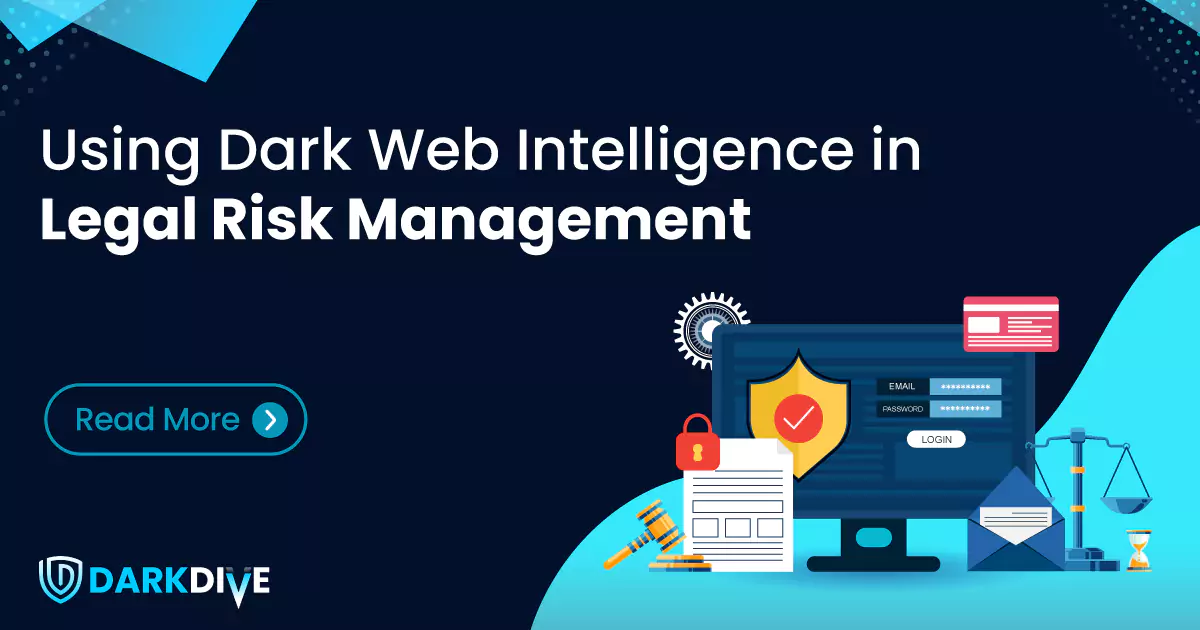
Legal teams don’t often come to mind when discussing cybersecurity, but they should. As cyber threats evolve, the courtroom is becoming just as critical as the security operations center. Today, evidence tied to a breach isn’t just found in system logs or inboxes; it’s lurking in encrypted forums, obscure marketplaces, and Telegram groups buried deep within the dark web.
This is where threat actors share leaked contracts, impersonate legal documents, and sell stolen credentials. It’s also where the early signs of corporate fraud, insider threats, and IP theft first appear. And if legal teams aren’t equipped to understand or capture this kind of data, they risk falling behind—in both defense and accountability.
The Rise of Dark Web Evidence
When company data is compromised, it often doesn’t go straight to the press or regulatory agencies. It goes to the dark web. And what ends up there isn’t just usernames and passwords; it can include signed NDAs, pricing agreements, internal legal communications, and strategy documents. For legal teams, this isn’t noise. It’s potential evidence.
But this ecosystem isn’t structured like an email archive. Posts disappear quickly. Users hide behind aliases. Entire threads vanish after a single transaction. Unless you’re actively monitoring and know what you’re looking for, you might miss key digital breadcrumbs that could help you understand how an incident unfolded or who was behind it.
One Missed Post, One Lost Case
The consequences of overlooking dark web chatter are more than theoretical. Legal teams often struggle to piece together timelines or assign liability because the earliest indicators, things like “new drop” mentions or stolen contract listings, were never flagged.
Here’s what can go wrong:
- A confidential contract shows up on a criminal forum, leading to accusations of negligence.
- A leaked pricing document appears weeks before a major deal falls through, suggesting insider foul play.
- Credentials tied to a legal admin are sold online and later used to modify access logs — and no one knows how or when it happened.
- The longer these signals go unnoticed, the harder it becomes to control the narrative or mount a solid legal defense.
The Legal Tightrope
Collecting information from the dark web comes with its own legal gray zones. Is it authentic? Was it gathered in a defensible manner? Can it be tied back to a specific breach or actor? These are the questions courts and regulators are starting to ask.
You’re not expected to control what happens in the dark corners of the internet. But regulators do expect that you made an effort to identify, monitor, and act on clear signs of exposure—especially in breach response cases. Ignoring this intelligence isn’t just risky. It’s becoming legally indefensible.
That’s why collaboration between legal and cybersecurity teams is critical. Legal needs to know not just what was exposed, but when it was first seen, who interacted with it, and whether it can be linked to internal failures or external attackers.
How DarkDive Supports Legal Teams
DarkDive brings structure to chaos. It continuously scans the dark web—forums, breach dumps, marketplaces, and private chats, for mentions of your organization’s legal and sensitive assets. But it doesn’t stop at raw data. It provides fully contextual alerts, helping legal teams identify:
- Which documents or credentials were leaked
- Where and when they were posted
- How they connect to ongoing incidents or legal concerns
- What evidence is worth preserving for internal review or court
Everything is timestamped, documented, and accessible in a secure audit trail — helping your legal team build stronger cases and respond with confidence.
The Legal Stakes Are Only Getting Higher
What used to be the domain of IT teams is now part of legal risk management. As breaches grow more complex and legal implications grow sharper, dark web intelligence is no longer optional. It’s an early-warning system and a growing category of discoverable evidence.
If your legal team isn’t watching the same channels threat actors use, you’re already behind the curve. DarkDive helps you close that gap, not just with visibility, but with insight that’s built for legal action.
